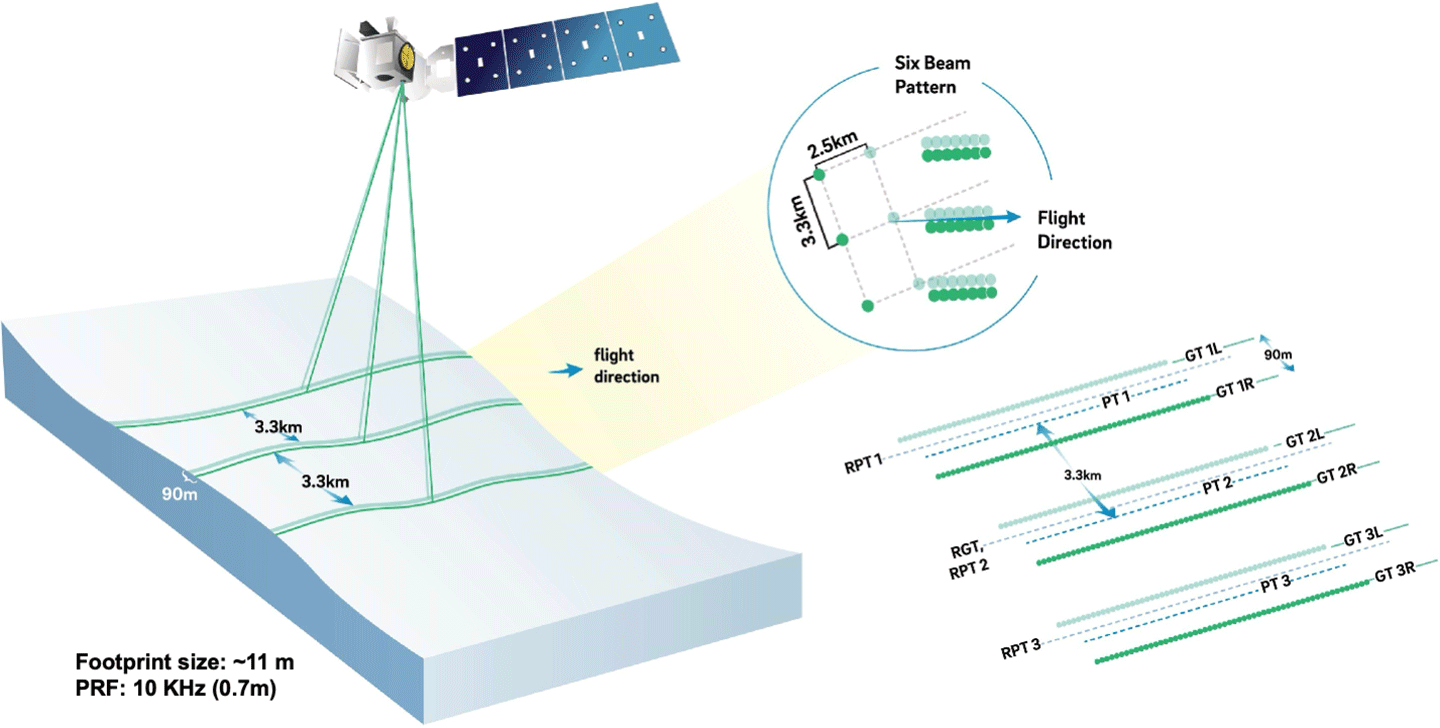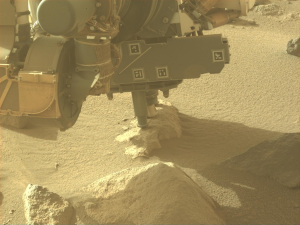Sols 4209-4211: Just Out of Reach
Earth planning date: Friday, June 7, 2024 Curiosity is going to have a busy 3-sol weekend. We have one more sol of intense contact science activities at this really beautiful and fascinating location before moving on. What makes this place so special? We are seeing a lot of variety in the rocks in terms of […]

4 min read
Sols 4209-4211: Just Out of Reach
Earth planning date: Friday, June 7, 2024
Curiosity is going to have a busy 3-sol weekend. We have one more sol of intense contact science activities at this really beautiful and fascinating location before moving on. What makes this place so special? We are seeing a lot of variety in the rocks in terms of their colors and textures. The MAHLI image is an up-close view of the unusual coloration we’re seeing, which our scientists are busy investigating. In particular, the Whitebark Pass block just in front of us, which we have been investigating for several days, is highly complex. We are evaluating it as a potential drill target, but the spots we might drill are just a little too far away from our current location. Today I am the Tactical Uplink Lead for our planning, and planning today was almost as complex as our workspace!
On the first sol of the plan, Curiosity begins with a lot of imaging. We begin with the first of a series of change detection images on two sand targets (“Ten Lakes” and “Walker Lake”) so that we can characterize the current wind conditions. Then, ChemCam is doing a LIBS mosaic on Rodgers Pass, which is a target on Whitebark Pass. ChemCam also takes a passive mosaic on “Devils Postpile,” which is a another light-toned rock that we can compare to the similar-looking white rocks right in front of us, and a mosaic on the bright white stone field that is about 40m northwest of us. Mastcam takes large mosaics on Recess Peak, Devils Postpile, Whitebark Pass, and the white stones, before doing another round of the change detection images. After a nap, Curiosity wakes up to do a mid-afternoon set of change detection images before going back to sleep.
After the nap, Curiosity wakes up and does a set of late-afternoon change detection images before starting our contact science. This workspace is highly complex, making it challenging to get to all of the interesting science targets, but the Rover Planners managed to get it all into the plan. First, the DRT is used to brush the Grass Lakes target before we take a suite of MAHLI images on it. Next is a suite of images on the “Snow Lakes” target, which is another white rock in our workspace. On Snow Lakes we are investigating three different spots at 5cm above the rock to look at variation within it. Throughout the rest of the afternoon and evening, the rover will wake up to move the APXS to cover all of the contact science targets, Grass Lakes and the 3 spots on Snow Lakes.
Before handing over to the next sol’s plan, we do two more early morning change detection observations. On the second sol of the plan, we do additional imaging. ChemCam takes a LIBS mosaic of Rodgers Pass and a passive mosaic of “Gem Lakes,” another target on the Whitebark Pass block. After some Navcam atmospheric observations, a dust devil survey and deck monitoring, Mastcam follows up with an image of Rodgers Pass and another set of change detection images.
After the imaging is complete, we do a short forward drive to get more of the Whitebark Pass block into our workspace for additional contact science and evaluation as a potential drilling target. After the drive we will unstow the arm to get a better view of the new workspace as well as to save time in our next plan. After a bit of a nap, there is a MARDI image and Curiosity will go back to sleep.
On the last sol of the plan, Curiosity uses AEGIS to autonomously observe targets on Whitebark Pass after the drive. There are also some additional atmospheric images with Navcam, including a dust devil survey and suprahorizon movie. Just before handing over to Monday’s plan is a set of morning atmospheric observations, including a Mastcam solar tau, and Navcam zenith and suprahorizon movies.
Written by Ashley Stroupe, Mission Operations Engineer at NASA’s Jet Propulsion Laboratory
Share
Details
Related Terms
What's Your Reaction?















































